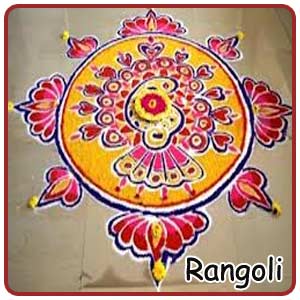 The Science of Making Rangoli
The Science of Making Rangoli
There are lots of reasons behind the science of making rangoli at the entrance of the house. It is a sign of Goddess Mahalakshmi and also it is believed that as the lady of the house makes this rangoli she will be chanting sacred mantras which will guard her house and her family members from evil forces. Rangolis are supposed to bring disposition free from stress or emotion and also one gets the feeling of entering a temple. Apart from being an ornamental phenomenon, the science behind it is to create a positive energy pool. The tradition of drawing figures at the doorstep is supposed to be a unique culture followed by the Tamils.
 Rangoli Separates the Inner and Outer World
Rangoli Separates the Inner and Outer World
-The Indians believe that the closed continuous figures of the kolam depicts the never -ending cycle of birth and death. Also it is believed that the rangoli separates the inner and outer world guarding the household and also gives a warm welcome to the guests. When we cross a rangoli we get the feeling of disconnected from the past and the future and forced to remain in the present. Thus we feel good to enter a house and also we leave the house with good vibrations. Rangoli plays a major role at the time of special occasions, religious and social festivals.
 Rangoli is the Origin of Spirituality
Rangoli is the Origin of Spirituality



